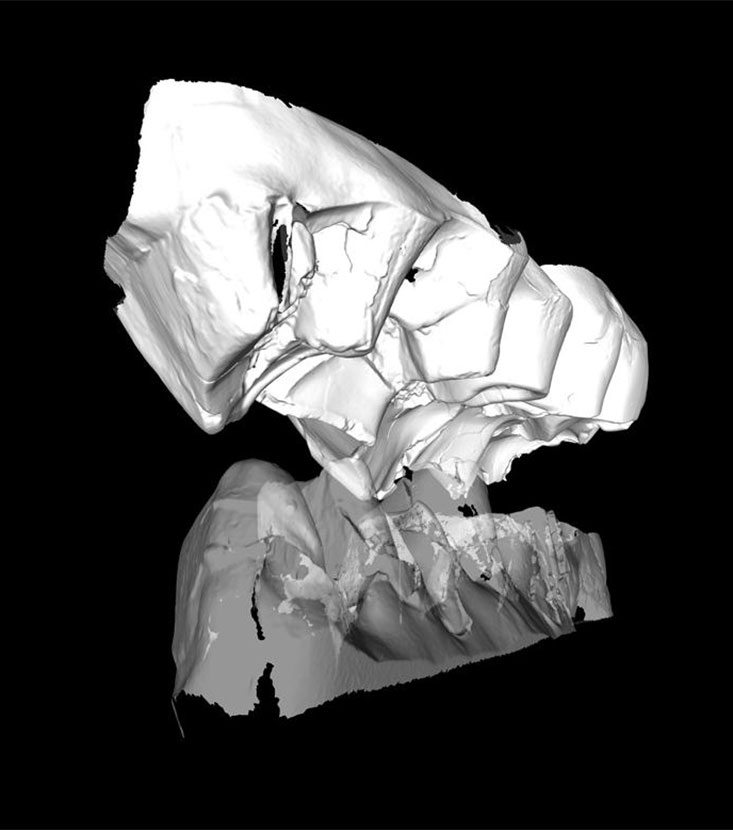Hydromechanics of mastication
The topography of the occlusal surface is the decisive mechanical "interface" of the mastication process. During mastication, forces act in the interdental space that displace and accelerate the spatulated food substrate. In the process, the mixture of liquid and solid components passes through large pressure and velocity gradients in the narrowing gap. It then depends on the local shear forces whether the mastication forces introduced are sufficient to break up the solid inclusions with their given biomechanical properties.

In addition to topography, the biomechanical properties of feeding substrates are incorporated into a modelling of hydrodynamics using the finite element method (FEM), which in principle is derived from an aquaplaning simulation. In this way, the pressures and flow vectors and shear forces can be read out at each point in time of the thawing stroke and those conditions can be simulated that reliably break down a substrate into a given particle spectrum. The texture data on the flow direction and viscosity data of food substrates created in a controlled manner obtained in project C3 "Biomechanics of the Occlusal Surface" will be incorporated into the modelling, as will the newly developed tool for aligning and moving the antagonistic tooth rows: the Occlusal Fingerprint Analyser OFA.

